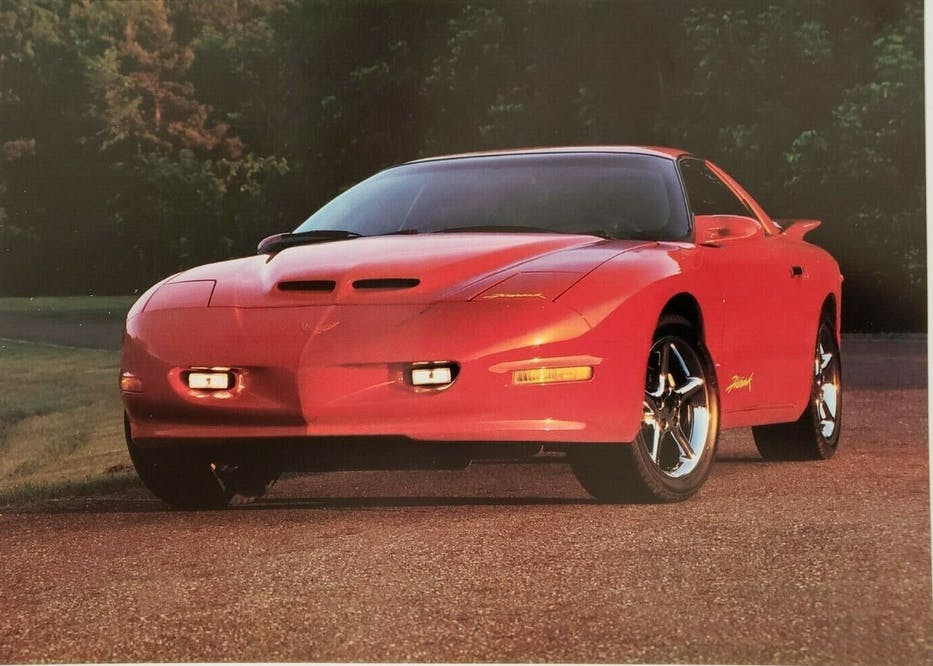Media | Articles
When the formula required added heat, Pontiac offered Firehawk

It’s a well-known fact that automakers don’t actually make all the parts that bolt up to their vehicles. Be it an Aisin AS66RC transmission in a Dodge Ram or Mercedes bits within a Tesla Model S, third-party solutions are used by the original equipment manufacturers (OEMs) to accelerate and simplify production.
What happens when a company secures one such vendor not simply to facilitate production, but to make the final product faster?

That’s where Street Legal Performance (a.k.a. Specialty Vehicle Engineering) came into play. The company earned General Motor’s adoration by designing and manufacturing the first 50-state legal (i.e. legal even in California) performance pack for the 1988 Chevy Camaro and Pontiac Firebird. The kit netted a 50-hp increase with a 2 mpg improvement on the highway, thanks to SLP’s work on the tune-port injected V-8’s intake (specifically, replacing those restrictive intake runners), a custom exhaust, and bespoke computer tuning.
With the 5.0 Mustang dominating the streets at the time, General Motors wanted a slice of the action. A joint effort with SLP was promising: The automotive press would clamor over it, the dealer network would love the added revenue from its hot-rodding clientele, and SLP would get a direct link to F-body production as a final assembly point for the renamed Pontiac Firebird. Meet the Firehawk, ordered and delivered by your friendly Pontiac dealer under the RPO code B4U (1991–92), R6V (1993–97), or WU6 (1999–2002).
Motorweek got its hands on a fourth-generation Firebird Formula optioned with the R6V Firehawk treatment, and its LT-1 mill sported bolt-ons and a bespoke ram-air hood scoop. The upgrades translated into 0–60-mph and quarter-mile stats on par with those of forthcoming LS-1 F-bodies. That level of performance was no joke. In addition, SLP’s team also upgraded the springs, control arms, front sway bar, and rear-axle torque arm. The end result was a balanced package, sittin’ on some seriously wide wheels with Firestone Firehawk (of course) tires. The interior remained stock, which is impressive—Motorweek’s example still had the Formula’s understated cloth seats.
Marketplace
Buy and sell classics with confidence
The later LS-1 Trans Am also benefitted from the SLP treatment (RPO WU6), though the waters were somewhat muddied by the inclusion of Pontiac’s own WS6 package. That’s because the WS6 also had an extra smattering of horsepower, a Hurst shifter, and even a unique-to-WS6 ram-air hood.
Does the WS6 prove that imitation is the sincerest form of flattery? That depends on how far back in Firebird history you want to go, but I digress …
Perhaps we leaped too far ahead in SLP’s history. Was the original (RPO B4U) the best of the breed?
I’d wager yes. The original Firehawk possessed a stunning amount of work above and beyond the reasonably impressive powertrain of the third-generation Firebird. Motorweek also wrangled a B4U Firehawk, and it didn’t disappoint: a robust 350 horses from an L98 small-block Chevy and a T-56 six-speed manual swap that foreshadowed the fourth-generation F-body. The conversion was clean, especially on this example’s interior custom console.
The end result? This Firehawk was significantly faster than the soon-to-be-released LT-1 and was also quicker than a Firehawk-fettled version. It’s likely that a B4U Firehawk owner could beat a (stock) LS-1 powered F-body in any dynamic battle, especially if they ordered the aluminum hood, the upgraded Brembo front disc brakes (supposedly shared with the Ferrari F40), and a track-friendly roll cage. Those improvements weren’t cheap, but they were readily available at your local dealer upon selection of that magical RPO code.











I have a 1995 firebird convertible V6 with 21,000 miles on it. Excellent condition. Fire engine red with white top. Looking to sell this. What do you think it is worth? Where is the best place to sell it? I have been offered 18,000 for it, but I have seen other V6 sell for more with more mileage. Thank you